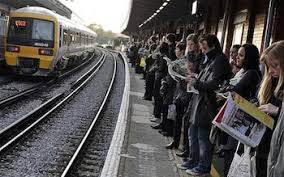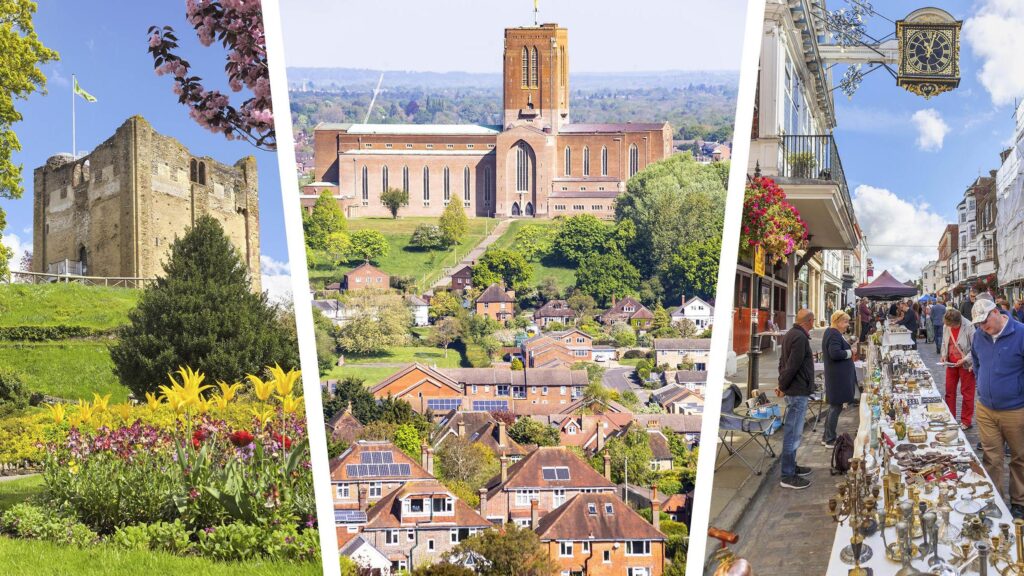If you commute to London regularly, choosing the right area to live can make a big difference in your daily routine. You want somewhere with quick transport links, reasonable housing costs, and good local amenities. The best areas outside London for commuters in 2025 balance travel time with quality of life and affordability.
Locations like St Albans, Guildford, and Reading continue to offer strong rail connections and appealing neighborhoods. These towns give you access to London’s job market without the high living costs of the city itself.
You’ll also find emerging commuter hubs with improving infrastructure, making them worth considering if you prioritize convenience and value. Knowing which places combine these factors helps you make a smarter choice for your commute and lifestyle.

Top Commuter Towns Near London
You’ll find towns with reliable train services, varied housing options, and access to green spaces. Each town offers a distinct balance of commute ease, local amenities, and community feel.
St Albans
St Albans is popular for its 20-25 minute train journey to London St Pancras, making it one of the fastest commutes. You get a mix of period homes and modern developments, catering to different budgets.
The city center has shops, restaurants, and a historic cathedral. If you want green space, Verulamium Park is large and well maintained. Schools here have strong reputations, adding appeal if you have children.
Reading
Reading offers a major railway hub with up to 4 trains per hour to London Paddington, averaging 25-30 minutes. The town is growing, with new residential zones and shopping areas like the Oracle complex.
You benefit from a wide range of property types, from apartments to family homes. Local schools and transport links to Heathrow or the M4 motorway enhance its value for commuters and travelers.

Guildford
Guildford’s commute to London Waterloo takes 35-40 minutes. It has a more upmarket housing market, featuring period houses and new builds in a well-regarded university town.
The town centre provides boutique shops, cafes, and historic streets. You can explore surrounding countryside easily, including the Surrey Hills Area of Outstanding Natural Beauty, perfect for weekend breaks.
Criteria for Choosing the Best Commuter Areas
When selecting commuter areas outside London, focus on key practical factors. These include how well connected the location is to your workplace, the cost and variety of housing available, and everyday living conditions that impact your comfort.
Transport Links and Connectivity
You need direct, reliable transport routes into central London. Look for areas served by multiple rail lines or fast train connections with frequent departures during peak hours.
Road access is crucial if you drive. Proximity to major motorways or A-roads can reduce your travel time and provide flexibility.
Also consider other commuting options such as bus services, park-and-ride facilities, and cycling infrastructure. Good transport connectivity means fewer delays and less stress on your daily commute.
Affordability and Housing Options
Evaluate the average property prices and rental rates compared to your budget. Some commuter towns offer a wider range of property types, from flats to family homes, often at more reasonable prices than London.
Check the availability of new developments or housing schemes. These might offer modern amenities and energy efficiency that older homes lack.
Consider local taxes and living costs, such as council tax bands and utility prices, as these add to your monthly expenses. Affordability affects not just the initial move but your long-term financial stability.
Quality of Life Factors
Look beyond commuting and housing to find areas with good schools if you have children. Access to healthcare facilities, parks, and leisure activities also shapes your daily life.
Safety levels and community engagement contribute to a comfortable environment. Lower crime rates and active neighborhood groups help foster a sense of belonging.
Finally, check local amenities such as shops, restaurants, and cultural venues. Ease of access to services outside work hours is key to maintaining balance.
Emerging Hotspots for London Commuters
These locations offer improved transport links, affordable housing compared to London, and growing local amenities. They balance commute time with quality of life, making them practical choices for your daily travel.
Ashford
Ashford benefits from the high-speed rail link to London St Pancras, cutting commutes to around 37 minutes. This is one of the fastest connections outside central London.
Housing prices in Ashford remain below the national average, giving you more value for your money. The area also offers ongoing regeneration projects bringing new shops, parks, and schools.
You’ll find a mix of modern developments and established neighborhoods. The retail and leisure options are expanding, making it easier to enjoy local life outside work hours.
High Wycombe
You can reach London Marylebone from High Wycombe in about 30-40 minutes by train. Services have increased frequency, reducing wait times during peak hours.
The town combines a market town atmosphere with recent housing developments tailored for commuters. Property prices are competitive, especially when compared to London zones 4 and 5.
Local schools and green spaces are well-regarded, helping if you have a family. The regeneration around the town centre is also making shopping and dining more convenient after work.
Stevenage
Stevenage offers a direct train to London King’s Cross taking approximately 25 minutes, one of the quickest commutes available. This makes it suitable if your priority is minimizing travel time.
Prices for homes tend to be lower than many London suburbs, making it attractive if budget is a key factor. New residential projects are underway, responding to increased demand from commuters.
The town has a variety of schools, retail parks, and sports facilities. You will benefit from ongoing investment in infrastructure and community services, enhancing everyday living close to the capital.
Lifestyle and Community Considerations
When choosing a commuter town outside London, consider the local lifestyle and community atmosphere. You want an area that aligns with your daily needs and personal interests.
Look for places with good social infrastructure, such as parks, cafes, gyms, and community centers. These facilities support a balanced life outside of work hours.
Safety is another key factor. Research crime rates and local policing to ensure you feel secure in your neighborhood.
Evaluate the community vibe. Smaller towns often have close-knit communities, which may offer more social interaction but less anonymity than larger towns.
Public transport accessibility impacts your lifestyle beyond commuting. Frequent and reliable services support spontaneous trips and reduce stress.
Use this checklist to assess lifestyle fit:
| Factor | What to Check | Importance |
|---|---|---|
| Amenities | Shops, healthcare, leisure | High |
| Community Engagement | Events, clubs, local groups | Medium |
| Safety | Crime statistics, local news | High |
| Transport | Frequency, station access | High |
Your choice should reflect how you want to live outside of work—whether that means peaceful suburbia or a more vibrant town center.
Leave a Reply